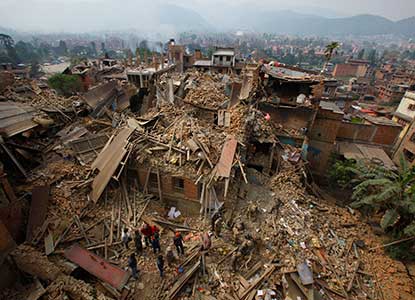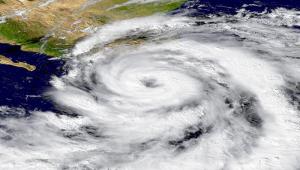The United Nations Office for Disaster Risk Reduction said that it was clear last year, the hottest on record, that weather and climate-related disasters now dominate disaster trends linked to natural hazards.
Robert Glasser, head of the UN agency, said climate, often aided by a strong El Niño – a cyclical weather pattern that causes warming in the tropical pacific – was a factor in 92% of the disasters recorded.
“The most obvious impact was the 32 major droughts recorded, which was more than double the ten-year annual average. These affected 50.5 million people and many have continued into this year particularly in Africa,” he said.
While the effects of El Niño have been felt across Latin America and Asia Pacific, in particular in countries like Papua New Guinea, Africa has seen some of the worst consequences.
More than 18 million people were food insecure in Ethiopia at the end of last year and Zimbabwe is in a state of emergency, with the government appealing to local businesses and charities for funds to help.
A joint-statement released today from researchers and UN agencies including the World Food Programme and the European Commission’s Joint Research Centre warned that the continuing effects of one of the strongest El Niño events in 50 years are set to have an even more devastating impact on food security in southern Africa over 2016.
“The main message from this analysis is that reducing greenhouse gases and adapting to climate change is vital for countries seeking to reduce disaster risk now and in the future,” Glasser said.
Last year’s heat also contributed to a major loss of life from heatwaves in France, India and Pakistan, totalling 7,346 deaths, compared to a ten-year average of 7,232 deaths.
Debarati Guha-Sapir, director of the Centre for Research on the Epidemiology of Disasters, said mortality from extreme temperatures, such as the severe events in 2015, is under-estimated and that better evaluation of the impact of such events is needed.
As well as drought, El Niño brings heavy rains and floods, which affected 27.5 million people and claimed 3,310 lives, compared to a ten-year average of just under 6,000 deaths and 85.1 million people affected.
Heavy rains also cause landslides, which affected upwards of 50,000 people and killed more than 1,300.
Rising sea levels and sea surface temperatures also contributed to a very active cyclone season in Asia Pacific.
However, in the case of the 90 storms reported last year, 48 of which were cyclone strength, early warning systems seem to be having an impact in reducing the death toll, which Guha-Sapir said makes the case for further investment.
Earthquakes on the other hand remain the most deadly form of natural hazard underlining the “importance of ensuring compliance with building codes”, Glasser said.
In April 2015, a 7.8 magnitude earthquake shook Nepal, claimed more than 8,000 lives, and more recently at least 90 people have died following a building collapse in Taiwan. The architects who developed the complex have been detained on suspicion of negligence.














